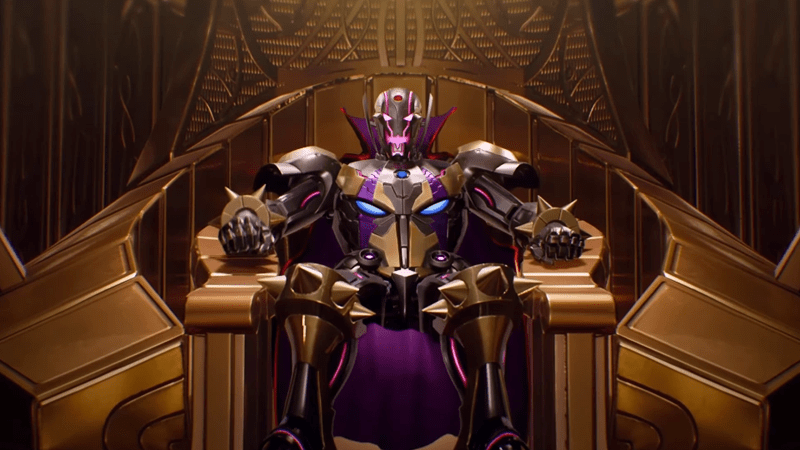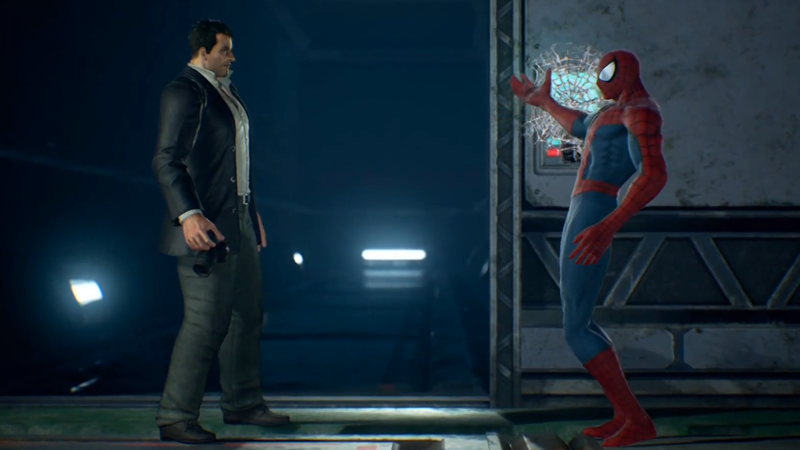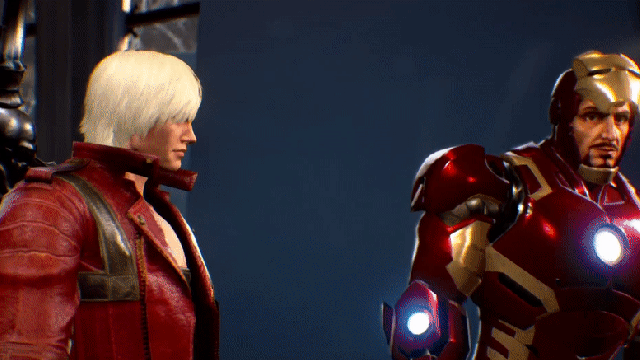Crossovers are a staple of comic fiction, whether that’s in the books themselves, in the movies, or even in the video game adaptations. At their best, they’re fannish delights, getting to hint at what it would be like for such disparate characters to really meet. At their worst, they’re squandered opportunities.
The power of the crossover has been something that’s been understood in Capcom’s long legacy of Marvel mashup fighting games, all the way from 1996’s X-Men vs. Street Fighter to this week’s release of Marvel vs. Capcom: Infinite. But Infinite is the first game in the series to actually use the premise of the Marvel and Capcom’s universes being smushed together to tell a story beyond some artwork at the end of an arcade run, with its own cinematic story mode. Unfortunately, Infinite‘s three-hour story (it could be a little longer than that, if you’re bad at fighting games like I am and goddammit why won’t Thanos stop kicking me to death) spends much more time squandering its opportunities than it does celebrating the absurdity of its crossover premise.

Infinite‘s story is set three months after a disastrous event called “The Convergence”, caused by villainous Marvel robot Ultron using the Infinity Stones of Space and Reality to not only merge himself with fellow robot and Mega Man X villain Sigma, but also merge the worlds of Marvel and Capcom into one, messed up universe. Mega Man X‘s Abel City is mushed into Asgard. Monster Hunter‘s Val Habar merges with Black Panther’s Wakanda. MODOK’s anarchist scientist group AIM is mixed in with Resident Evil‘s zombie-loving Umbrella corp, becoming the wonderfully named AIMbrella.

Look at the collar on that cape. Majestic.
With Ultron and Sigma — now helpfully calling itself Ultron Sigma — in control and their armies beating back any signs of resistance, the heroes of the Marvel and Capcom universes are bound together in a last-gasp attempt to find the remaining Infinity Stones to defeat Ultron Sigma and unfuse their worlds. It should be ludicrous and crazy to see these disparate characters banter their way through saving not one world, but two. On paper, it sounds like it’s going to be. But Infinite isn’t.
What is astounding about Infinite‘s story is how completely lifeless it can be at times. Marvel vs. Capcom as a series has become such a memetic, beloved franchise in the fighting game scene because of its pedigree as a big, bold and flashy series, jam-packed with larger-than-life characters doing crazy moves at such a pace it blurs into a pixellated, candy-coated explosion of joy and style. Infinite‘s story plays out like its participants barely care to be there, thanks to voice work ranging from flat to atrocious and an aesthetic that’s been roundly criticised by fans since the game’s announcement that makes everyone from Captain America to Spider-Man look like ‘roided-out embodiments of the muscular excess of ’90s comics.
But its biggest crime is how little it manages to capitalise on bringing these two wild worlds together, both on either a macro or micro scale. By setting itself three months after the mashing up of the Marvel and Capcom worlds, Infinite robs itself the joyful opportunity of showing these characters actually meeting for the first time and getting to know one another — prime crossover gold. Instead, by the time the story opens, they all know each other enough that the first time you see them interacting together it’s pretty much acknowledging that there is another person standing next to them by saying their full name out loud to each other. It’s… as dull as that sounds.
There are a few moments where Infinite lets itself have a little fun with these characters that really shine. An early trip to the Black Panther/Monster Hunter land of Valkanda sees Street Fighter‘s cool-headed straight man Ryu partnered with the infamously hot-headed Hulk, as Ryu tries to teach Bruce Banner how to centre and calm himself while the two tag team against a giant sand-dragon creature from the Monster Hunter games.
Another inspired pairing matches up snarky photojournalist Frank West from the Dead Rising series (yes, he does remind you that he’s covered wars, you know) with the equally snarky photojournalist Peter Parker as they help explore the bowels of the unholy matrimony of AIM and Umbrella corp. It’s literally just a single line from Peter at Frank’s expense though, but it’s a moment that’s so perfectly goofy and good that you can’t help but yearn for Infinite to keep doing things like that, only for it never to go there again. It never really spends time thinking about what fun these characters being together should be, and instead has them standing around mostly repeating lines about finding the Infinity Stones and stopping Ultron Sigma. The vast majority of interactions between these characters are disappointingly surface level.
Missed opportunities also come in the form of how many intriguing ideas Infinite lays down for its world almost for it to almost instantly discard them. Setting itself in the beleaguered remnants of of the convergence should lead to some interesting looks at what the world is like after two universes have been smashed together, but Infinite‘s story pays lip service at best to the concept, never really trying to scratch beneath the superficiality of its surface. The idea of Resident Evil villains Umbrella getting their hands on the alien symbiote that gave us Venom and Spider-Man’s iconic black suit is fascinating, but it’s quickly discarded after hastily setting up a mystery of AIMbrella kidnapping civilians for nightmarish experiments, making you wonder what the point was in the first place.

Everyone in this game has alarmingly large, muscular torsos.
At another point, practically out of nowhere, the game introduces the concept of the Sigma virus — an airborne version of Ultron Sigma’s merging powers that can techno-zombify the heroes and put them under his thrall — and then utilises it to affect one hero, Thor, before largely forgetting about it until it comes time to cure him during the finale. Early on after deciding to turn to Thanos to help find the Infinity Stones, Captain America and Iron Man find themselves as ideological odds — for once it’s Tony unwilling to cross that line, to boot — but the debate immediately leads to a fight, that itself ends with the debate being dropped just as quickly, never to be brought up again. Infinite‘s story is littered with missed opportunities such as this.
The moment there’s an opportunity for a wacky scenario or some quippy banter, Infinite ushers itself away from them to get back to droning on about Infinity Stones. The whole point of comic book crossovers is that they’re big dumb fun: They take an earnest joy at getting to put all these different eggs into one basket and then upending the whole damn thing to make a glorious mess. A mash up of the worlds of Marvel and Capcom is the perfect playground to celebrate the inherent silliness of comics, video games and crossovers, but Infinite‘s story takes itself so seriously that it pretty much forgets what bonkers fun it should be.
If you want a serious story told in the confines of a comic book fighting game, Injustice 2 already came out this year and did that, mostly brilliantly. If you want a story mode that embraces the sillier side of comic book story telling, however, you’ll still be waiting after slogging through Marvel vs. Capcom: Infinite.
